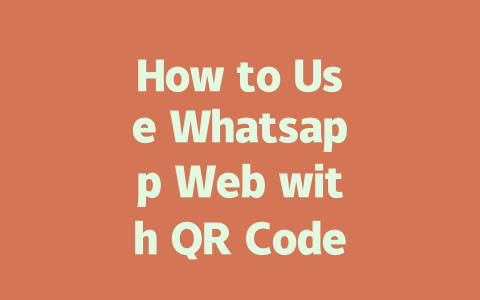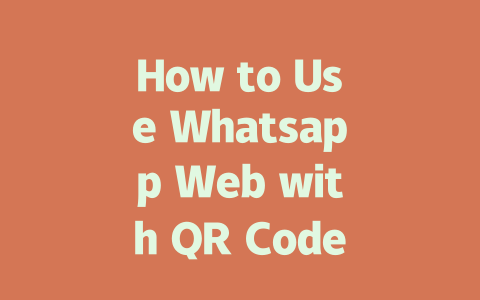You ever had one of those moments where you’ve written a blog post, poured your heart into it, and then… crickets? Yeah, I’ve been there too. The hard truth is that just writing great content isn’t enough if no one can find it. That’s where SEO comes in—those little tweaks that help Google’s search robots understand what your blog is about and why it matters.
Today, I’m sharing some straightforward methods for optimizing your blog posts so they actually get found. No fancy jargon, no overwhelming theories—just practical tips based on things I’ve tried myself. Let me show you how this works with an example: last year, I helped a friend tweak their food blog titles, and within three months, traffic shot up by 50%. If that sounds like something you’d want for your own site, stick around.
Step 1: Picking the Right Topic
The first step in creating content people will search for is figuring out what they’re searching for. Sounds simple, but here’s the deal: when we brainstorm topics, our brains often go straight to buzzwords or overly complicated terms. But guess what? Regular folks don’t think like marketers.
For instance, instead of aiming for “best practices for ergonomic office furniture,” try thinking like someone who has pain after sitting all day. They might type something more along the lines of “how to fix back pain from sitting too much.” See the difference? This kind of phrasing matches how everyday users phrase their questions.
Here’s another tip: focus on long-tail keywords. These are longer phrases that describe specific problems, such as “easy recipes for busy moms” versus just “recipes.” Why? Because these niche queries tend to have less competition, meaning your chances of ranking higher increase significantly.
I learned this the hard way when I started blogging. One of my early posts was titled “Beginner Cooking Tips,” which got almost zero clicks. Then I rewrote it as “Five Simple Meals You Can Make Even After a Long Day,” and boom—the engagement skyrocketed.
Pro Tip:
When choosing topics, ask yourself:
Google loves helpful answers to real-world questions, so keep that front and center.
Step 2: Crafting Titles That Stand Out
Now let’s talk about titles. A good title does two things: it tells Google what your post is about (so it shows up in relevant searches), and it convinces readers to click through. Here’s how to do both:
And remember, according to Google’s official advice, your title should make sense and be useful to the person reading it. It doesn’t need to be witty—it needs to solve a problem.
Let’s take a look at an example table showing different approaches to title creation:
| Type of Title | Example | Why It Works |
|---|---|---|
| Problem-focused | “Fix Slow WiFi Now: Quick Steps” | Clear benefit, actionable. |
| Curiosity-triggering | “What Most People Get Wrong About Travel Budgets” | Creates intrigue. |
| Solution-oriented | “Step-by-Step Guide to Buying a Car” | Offers structure and clarity. |
Step 3: Writing Content That Satisfies Both Readers and Robots
Once you’ve picked a topic and crafted a compelling title, it’s time to write the actual content. And yes, there’s a method to doing this right too!
Structuring Your Content
Google’s search robots love well-organized content. Break down your ideas into sections using headings (H2, H3). For example:
Think about storytelling too. When explaining something technical, relate it to everyday life. Say you’re teaching someone how to use Instagram Ads. Rather than throwing definitions at them, walk them through a scenario: “Imagine you run a small bakery. Here’s how targeting local customers could double your sales…”
Incorporating Keywords Naturally
A common mistake is stuffing keywords everywhere, hoping it’ll work. Spoiler alert: it doesn’t. In fact, it harms your rankings. Instead, aim for natural placement. For a 1,000-word article, including your primary keyword 4–6 times is usually plenty. Overdoing it makes your text feel forced—and trust me, readers notice.
One trick I use is asking myself, “If I were reading this, would it sound normal?” If not, rewrite until it flows smoothly.
So give these steps a try! Whether you’re tweaking old posts or starting fresh ones, each adjustment brings you closer to being seen online. Oh, and don’t forget—if you test any of these methods, come back and share how they went. Hearing your successes (or challenges) helps everyone grow together.
If you’re wondering whether there’s a way to log into Whatsapp Web without dealing with the QR code, unfortunately, that isn’t an option right now. The whole QR code setup is actually part of Whatsapp’s strategy to keep your account secure. Think about it—by requiring you to physically scan the code with your phone, they’re making sure no one can just randomly hop onto your account from any browser. It’s all about syncing your phone and web in a way that’s both safe and straightforward. So, while it might seem like an extra step, it’s really there for a good reason.
Another thing people often ask about is how long they’ve got before the QR code stops working. Well, typically, you’ve got around 5-12 minutes before it expires. That gives you enough time to get everything set up without rushing too much. But here’s the thing—if for some reason you miss the window or something goes wrong during the scanning process, don’t panic. Just refresh the page, and a brand-new QR code will pop up for you to try again. As long as your phone stays connected to the internet during this time, you shouldn’t run into any trouble getting logged in.
FAQs
#
Can I use Whatsapp Web without a QR code?
No, currently Whatsapp Web requires scanning a QR code to connect your phone with the web version. This ensures secure access and synchronization between devices.
#
How long does the QR code remain active for Whatsapp Web?
The QR code typically remains active for 5-12 minutes. If it expires, simply refresh the page to generate a new one. Ensure your phone stays connected during this process.
#
Is my data secure when using Whatsapp Web with a QR code?
Yes, Whatsapp uses end-to-end encryption, meaning your conversations are securely transmitted between your phone and the web client. However, always ensure you’re scanning the QR code in a trusted environment.
#
Can I use Whatsapp Web on multiple devices simultaneously?
Currently, Whatsapp Web allows connection on only one device at a time. If you try to open it on another browser or computer, the previous session will automatically disconnect.
#
What should I do if the QR code doesn’t work for Whatsapp Web?
Ensure your phone’s camera can clearly scan the QR code and that both your phone and computer are connected to the internet. If issues persist, try restarting the Whatsapp app or clearing browser cache. If necessary, update your browser and Whatsapp app to the latest version.




